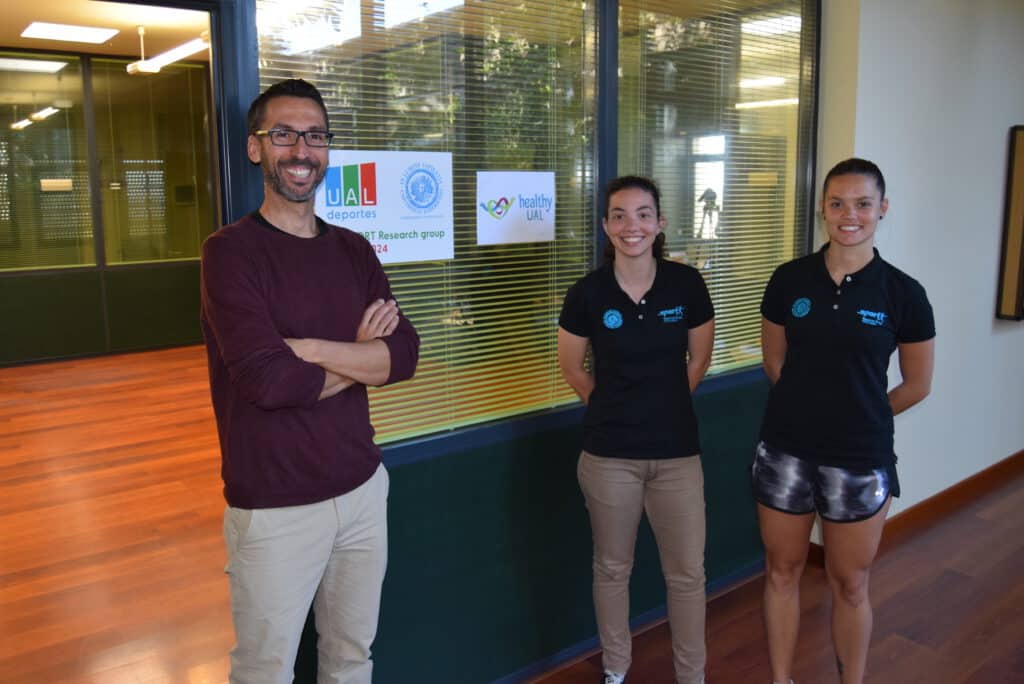The EJERCITALES Project consists of a 12-week training program created 'ex profeso' to test its effect on subclinical arteriosclerosis and inflammation characteristic of this population, published in two journals of high scientific impact, and in view of the results obtained, it is only a 'beginning' for further research.
As a result of the collaboration of researchers from the University of Almeria and the University of Granada, the project 'Effects of a Physical Exercise Program on Subclinical Arteriosclerosis and Inflammation in Patients with Systemic Lupus Erythematosus', also called 'EJERCITALES' by way of acronym, opens the way to hope for the improvement of the quality of life of these people. This project has been funded by the Consejería de Salud de la Junta de Andalucía "with the main objective of investigating the effects of a twelve-week program of progressive aerobic training, individualized and adapted, on arterial stiffness and inflammation in women with Systemic Lupus Erythematosus (SLE)", although the researchers have also evaluated the effects of this intervention "on physical condition and various self-reported variables, such as fatigue, depression or quality of life, which are usually affected in this population".
The results of the main study have been published in the prestigious Journal of Clinical Medicine, at https://www.mdpi.com/2077-0383/7/12/477. Its first author is Alberto Soriano Maldonado, member of the 'SPORT Research Group' (CTS-1024) and of the Department of Education of the University of Almeria. Soriano has specified that "EJERCITALES is an aerobic exercise program on a treadmill, which was specifically designed for the study, and which was adapted to the possible individual difficulties of each patient". The results of this first study reveal that "the people who carried out the training program substantially increased their aerobic capacity compared to the control group, which was only informed about what a healthy lifestyle should be like". Soriano pointed out that "the increase in aerobic capacity observed is equivalent to approximately 2 METS, which is a substantial change that, in other studies, has been associated with important reductions in mortality". It should also be noted that "neither arterial stiffness nor inflammation were affected by the program, which indicates that it is a safe intervention that does not adversely affect these cardiovascular risk factors, nor does it affect disease activity".
Soriano underlined the avenues for the future that remain open: "Although there are some published studies, there is still a great deal to be known about the effects of different training configurations in lupus, but it could be said that these are promising results that should lead to further research in this field". Another relevant result from EJERCITALES, published in the journal Disability and Rehabilitation, link https://www.tandfonline.com/doi/abs/10.1080/09638288.2020.1808904, is similarly encouraging. In this case, the first author of the article is Blanca Gavilán Carrera, of the University of Granada, and she demonstrates that this program, which has been carried out within the Internal Medicine service of the 'Virgen de las Nieves' University Hospital of the city of Granada, has been able to "significantly reduce the fatigue symptoms of the people who participated, although the depressive symptoms, stress, quality of sleep or quality of life did not show substantial changes with respect to the group that did not train". Another novel result of this work is that the increase in aerobic capacity observed after the exercise program turned out to be "partially responsible for the reduction in general fatigue observed after the intervention".
Previously, in a previous article published by the same researchers in the European Journal of Clinical Investigation, link https://onlinelibrary.wiley.com/doi/full/10.1111/eci.12885, "we had already shown that although age is the main factor that favors the arteries becoming stiff and increases the risk of arteriosclerosis, higher levels of cardiorespiratory fitness in women with SLE were associated with a lower annual increase in arterial stiffness". Therefore, as a whole, "the results of this project once again highlight the importance of preserving cardiorespiratory fitness in people with autoimmune diseases, such as lupus, with physical exercise being the only tool capable of preserving or even increasing it". Given its interest, this line of research has once again been financed by the Regional Ministry as a research project in the area of rare diseases, with the project entitled 'Physical Activity and Fitness as predictors of health in women with Systemic Lupus Erythematosus: Cohort Study with 2-year follow-up', whose principal investigator is Dr. José Antonio Vargas Hitos, from the Virgen de las Nieves University Hospital. This means that "in the coming months and years we will better understand the role of physical activity and fitness as markers of health in this population at high cardiovascular risk," says Dr. Vargas.



